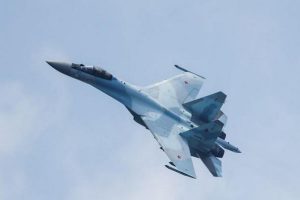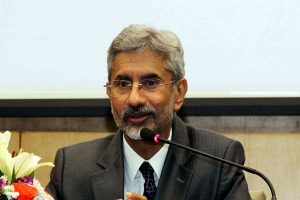The Calcutta Performing Arts Foundation and Bharatiya Vidya Bhavan very graciously presented ‘Barkha Bahaar’. This Purab Anga Gayaki-based two-day monsoon festival was held at Chowdhury House (30-31 August). The inaugural lamp was ignited by Aniruddh Chowdhury, the owner of this upscale venue, and Dr GV Subrahmanian, Director, Bharatiya Vidya Bhavan.
After independence, thumri-dadra did not get their due respect, despite the fact that whenever we remember Ustad Bade Ghulam Ali Khan, the first thing that hits us is the haunting dadras. Ustad Faiyaz Khan’s ‘Na manungi’ or Ustad Abdul Karim Khan’s ‘Jamuna ke teer’ are better remembered as their immortal pieces of music. Fortunately, Vinod Kapur, a devotee of the legendary Girija Devi’s soulful art, took it upon himself to nurture and propagate thumri and its allied forms (dadra, tappa, kajri, jhula, hori, chaiti; and also sanskar (ritualistic) geet).With Girija Devi’s consent, all were aptly brought under the canopy of Purab Anga Gayaki (PAG).
Advertisement
Since 2011, Kapur has organised a series of PAG Utsavs, inviting younger exponents from all over India and honouring the best ones with Girija Devi Puraskars till 2018. Intriguingly, Bengal bagged them all. After the sad demise of Vidushi Purnima Chaudhuri and Girija-ji, an unrelenting Kapur founded PAG Project in 2018 to encourage awardees to learn this dwindling art seriously and guide the young vocalists. The project sends willing exponents to erudite gurus by taking care of all the expenditures involved. The grateful scholars, eager to show Kapur the progress they made till now, participated in Barkha Bahaar’.
Advertisement
This unique event essentially featured budding PAG exponents groomed by the PAG Gurus, Vidushi Manju Sundaram (Benares), Vidushi Dalia Rahut (Kolkata), and their senior disciples, Suranjana Bose and Abanti Battacharjee, respectively. The extended PAG family is proud to win the support of gurus like Subhra Guha and Anjan Majumdar, along with several erudite disciples of Girija ji and Pandit DT Joshi. This camaraderie, led by Guru Dalia Rahut, Dr Manasi Majumdar, Dr Tapasi Ghosh, and several celebs, helped immensely during the dialogue on ‘Evolution of Thumri in Bengal’ in the afternoon session of the final day. The spontaneous and catchy responses from Pandit Tejendra Narayan Majumdar and Vidushi Sudha Dutta (daughter of Girija ji) kept the audience (mostly musicians) glued to their seats.
Among the well-known PAG exponents, the vocal-sitar duo Debapriya-Samanwaya, disciples of Girija ji, and Abanti won half of the battle with their magnetic stage personalities topped with artistry. Ably assisted by tabla exponents Ashoke Mukherjee and Aurobinda Bhattacharjee, along with harmonium wizard Debashis Adhikary, they were the concluding artistes of the first and second evenings, respectively, and on both days one could enjoy two rare tappas of PAG. The beauty of quietly confident Santa Kundu’s emotive renditions (Kafi jhoola, two varieties of kajri), with the sensitive tabla of Pran Gopal Bandopadhyay, the charm of Dipanjana Bose Chanda’s mellifluous voice capturing the moods of a ‘Gori’ waiting for her beloved, the ease of Jhumpa Sarkar’s melodious bol-banav, Bishnupriya Chakrabarty’s unique selection of a blissful, ritualistic sohar prior to Janmashtami and a thrilling talfirta, Madhumita Chattopadhyay’s husky voice striving to pour the heart out—all vouched for PAG’s success as an independent genre.
The young vocalists were no less effective. The multihued solo renditions of Deblina Ray, disciple of Suranjana Bose; Moupali Choudhury, disciple of Subhra Guha, accompanied by Ashoke Mukherjee (tabla) and Dilip Biswas (harmonium); and Sagnik Sen, disciple of Dalia Rahut, supported by Emon Sarkar (tabla) and Debashis Adhikary, sparkled like chiselled gems. Anjan Majumdar’s disciples Amrita Dutta and Ritisha Mukherjee stood out for their modern thought process. This indicated the now-evolving synthetic style of PAG.
Amuzing in Agartala
For the first time, Amuzing Academy of Performing Arts (ACPA) ventured out of West Bengal to jointly organise a ‘Monson Festival’ with Anuranan, Agartala. Their Agartala Chapter began with a full house. Renowned tabla maestro Parimal Chakraborty lit the inaugural lamp and invited the participants of a tabla ensemble, directed by Narayan Biswas. Once again, Chakraborty ascended the dais to script a grand finale with his solo tabla performance. He began with a peshkar and showcased some superb kyda, rela, chakradhar, and tukda with exemplary dexterity. His performance was a treat for the audience and a lesson for the new generation.
Earlier, Surajit Chatterjee (vocal) presented Raga Megh, followed by Gaud Malhar, and ended with a Tulsidas Bhajan. His rendition was soothing. Sitarist Debojyoti Gupta played Charukeshi. Although he didn’t choose a monsoon-specific raga, his skilful execution was commendable. Supported by Subrata Talukdar, a renowned tabla player from Agartala, he also played a Pahadi Dhun. Pandit Sandipan Samajpati sang Jog, highlighting the raga’s intrinsic pathos, and followed it up with the grand seasonal raga Miya Malhar. Both the vocalists of the evening were accompanied by Rajnarayan Bhattacharya’s comforting tabla and Hirnmay Mitra’s skilful harmonium.
Jhulan-Jatra Festival
Ramkanai Adhicary’s Jhulan-bari is better known for its Jhulan-Jatra Festival in the temple of the family’s residential deity, Radha-Govindjiu. Utpal and Raja Adhicary, the present heirs, are continuing the tradition of organising five evenings of classical music every year, preferably with dhrupad, because that was the only genre recognised as classical or dhrupadi music when Adhicarys started the fest almost two hundred years ago. Later, the paucity of Dhrupad exponents caused the entry of luminary Khayal maestros.
Despite the gloomy mood of the city and the skies, this revered annual ritual commenced with Babita Malakar, the sole dhrupad-singer of the event (16-20 August). Her 20-minute Yaman alap was initially tentative and displayed her limited voice range, especially in the lower octave, yet it caught her audience under its spell in the ten-minute-jod segments that confirmed Babita’s good grooming in Dagar School. After inviting pakhawaj expert Swarup Ghoshal and harmonium exponent Pradip Palit, she sang a chautal composition (Chalo hato jao Banawari) and Desh dhamar replete with layakari, bol-baant, and gamak-laden phrases.
Shatatantri Veena maestro Dishari Chakraborty completed the picture by playing his Santoor-like instrument in the Dhrupadi style of Baba Allauddin Khan. Durgeshwari was his first muse in the form of elaborate alap, and aided by Biplab Bhattacharya’s pakhawaj-like tabla, he succeeded in generating the warrior deity’s power-wielding movements in the jor-jhala segments. Then arrived Rasiya, an enchanting raga, with three gat-bandishes set to slow teental, medium-paced ektal, and fast teental. The properly placed sparkling dhrupadi embellishments apart, there were enjoyable sawal-jawabs, different varieties of jhala, and thrilling tihais. Bhattacharya’s power-packed tabla inspired this delicate instrument to create an energetic melody.
The same happened on the concluding day’s opening session, wherein Bhattacharya played tabla-jugalbandi with his extremely promi sing disciple Sohini Sarkar. Their harmonium accompanist Sourav Chakraborty created the mood with a sweet aochar in Raga Jhinjhoti. The teental uthhaan’s first open chant by Bhattacharya announced what to expect! But the bold pakhawaj effect was replaced by Ajrara Gharana’s kayda with delicate nikas. Sohini followed suit by playing another kayda composed by Shankar Ghosh, her dadaguru. She also played dhere-dhere with good execution of the bols on both tabla and bayan. They showcased several gats, including a Daheji-gat (received as dowry), and closed with Shiv-tandav paran.
Celeb vocalist Anol Chatterjee, flanked by his two disciples Debjit and Arpan on the tanpura, began delineating Malkauns. A brief aochar resting on keynotes and the repeated sthayi of the Madhya vilambit ektal composition (Eri kab aave, Sanjan se kahun jiya ki baat) made it very effective. During Bol-vistar, the pathos in ‘kab aave’ and ‘jiya ki baat were touching. Boltaans with soft gamaks, sargam gayaki, bol-baant pieces at the tail-end of taans creating tension before the arrival of sam, saath-sangat with Ashoke Mukherjee’s versatile tabla, loving guidance by Jyoti Goho’s seasoned harmonium—all these were aesthetically very pleasing.
The writer is a senior music critic
Advertisement











